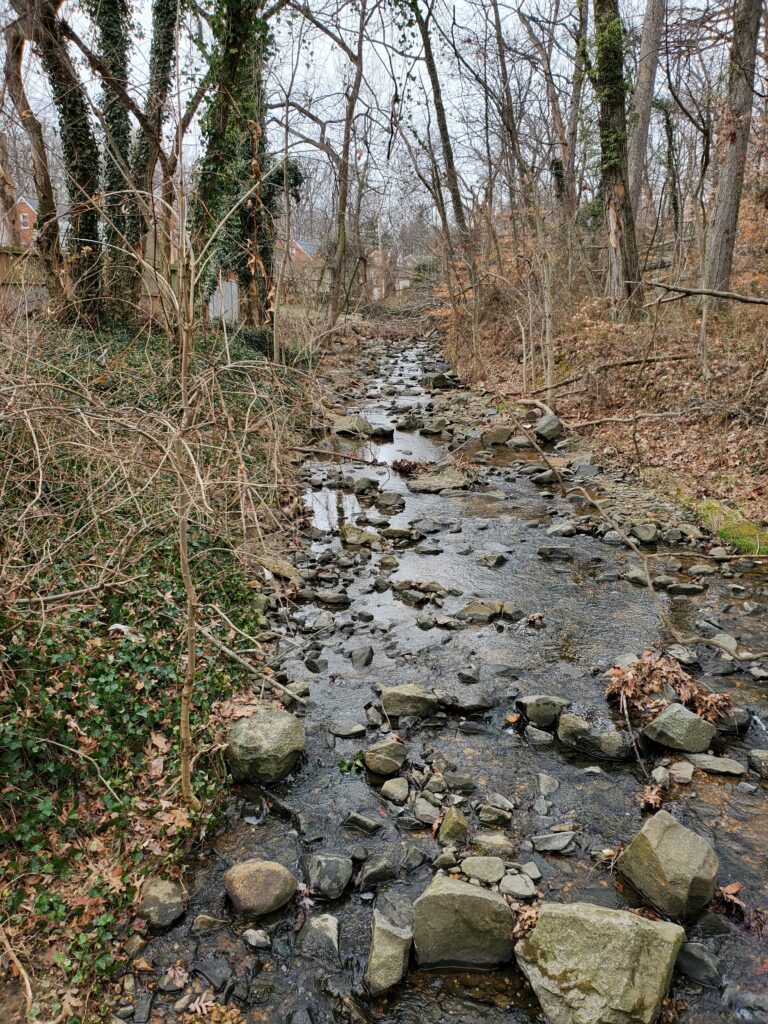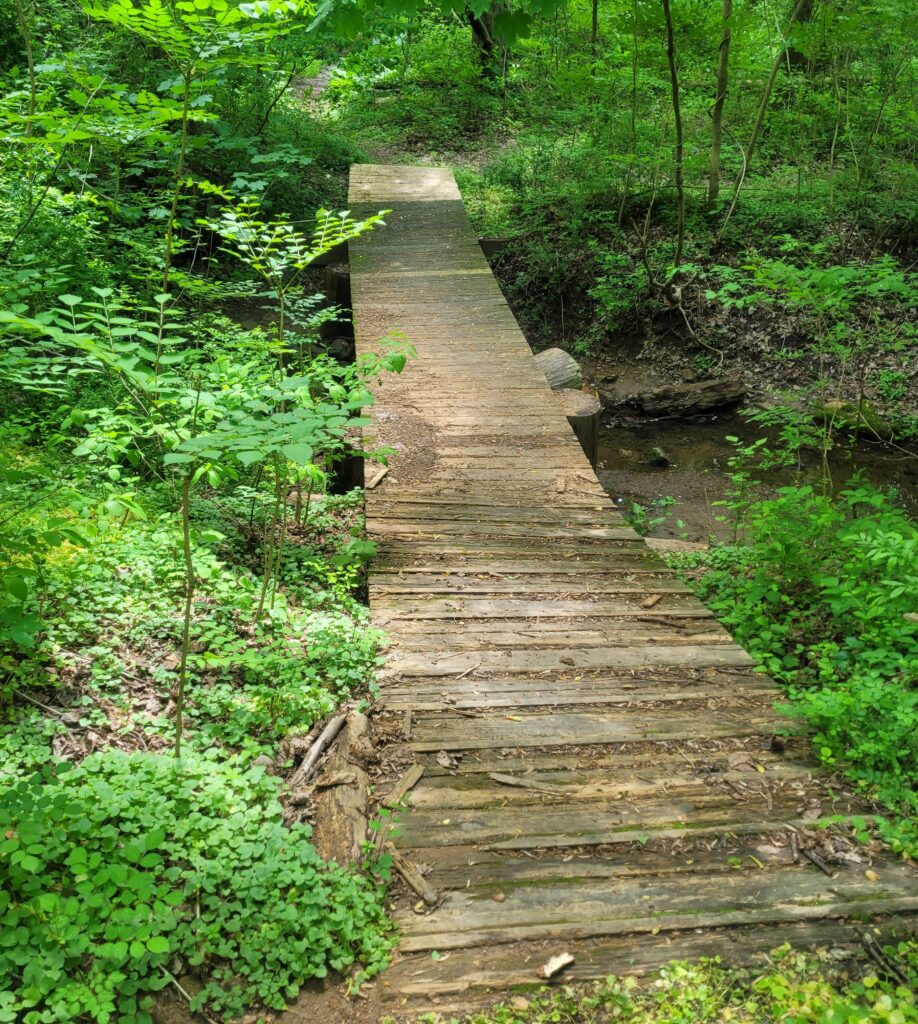NeighborSpace is excited to announce that it was recently awarded $60,000 through the National Fish and Wildlife Foundation’s Five Star and Urban Waters Restoration grant program. The award will fund immediate improvement of riparian habitat at three heavily used NeighborSpace sites as well as grow community capacity to sustainably monitor and steward these sites in the future. Through an invasive removal workshop, community science programs to assess forest health and inventory wildlife, and lessons at a neighboring high school, NeighborSpace will provide education on native plant, bird, amphibian and reptile species and on the importance of providing healthy riparian habitat by keeping streams clean, reducing stormwater runoff and removing invasive plant species. These educational activities will be paired with professional invasive removal, the planting of native trees, shrubs and perennials, and regular stream clean-ups.
This project will focus on the following three NeighborSpace sites.
- Levickas Woods is a 7-acre wooded property in Catonsville. Along its southern property line runs a tributary of the Patapsco Lower North Branch. Neighbors make use of the woods to walk their dogs and play.
- Tollgate Wyndham Preserve is a 7-acre forested site adjacent to both Owings Mills Elementary and High Schools in the Gwynns Falls watershed with a stream running through it.
- Volz Neighborhood Park is a 14-acre forest tucked behind three developments in Middle River. It is crisscrossed by multiple trails and a small tributary of Whitemarsh Run, which in turn feeds into the Bird River.
All three sites are riparian forest buffers. A riparian buffer is a vegetated area along the banks of rivers, streams, and other bodies of water that helps protect the aquatic ecosystem. This buffer zone typically consists of native plants, trees, and shrubs, which stabilize the soil, reduce erosion, and filter pollutants from runoff before they enter the water. Riparian buffers provide critical habitat for wildlife, enhance water quality, and contribute to the overall health of the watershed. In (sub-)urban areas, where dense development has decreased wildlife habitat and increased stormwater runoff, these natural barriers play an essential role in maintaining the ecological balance and protecting water resources.

Prior to receiving this grant, NeighborSpace had already begun to take small steps to assess and enhance these three sites. As is customary for land trusts, NeighborSpace performed a baseline assessment of each site at time of conservation, but staff and Stewardship Committee volunteers are now assessing each site in more detail, including taking inventory of native and invasive plant species and identifying areas of concern and opportunity. At Levickas Woods, NeighborSpace has partnered with the Dunmore Community Association and other partners to host multiple invasive removal sessions and a stream cleanup paired with a bug blitz. The Tollgate community has come out time and time again to remove litter from the Preserve.

Volunteer groups have helped remove invasives and the Natural History Society of Maryland’s Herpetology Club searched the site for amphibians in the early spring last year. We are only just getting started at Volz Park in the Bird River watershed, but cursory assessments by NeighborSpace staff, Baltimore Bird Club, and the Herpetology Club identified a surprising diversity of native plant, amphibian and bird species.

The Five Star grant will allow us to build on these activities. We will continue to host bird walks, herp walks, stream clean-ups and invasive removal sessions, and we plan to host the Neighbors for Native Plants course again next spring. Additionally, NeighborSpace is partnering with the University of Maryland’s Sea Grant Extension program and Science Department staff at Owings Mills High School to enrich the 9th and 10th grade curriculum. Funding will also be used to contract with a professional environmental service to perform invasive removal on a larger scale at all three sites. Other partners on this project include: Dunmore Community Association, Tollgate Action Group, Baltimore Green Space, Patapsco Heritage Greenway, and Greater Baltimore Wilderness Coalition.
October is Riparian Buffer Month, so it’s a great time to kick off this project! If you are interested in joining us, keep an eye on our events calendar.
Pingback: An Urban Waters Update – NeighborSpace of Baltimore County